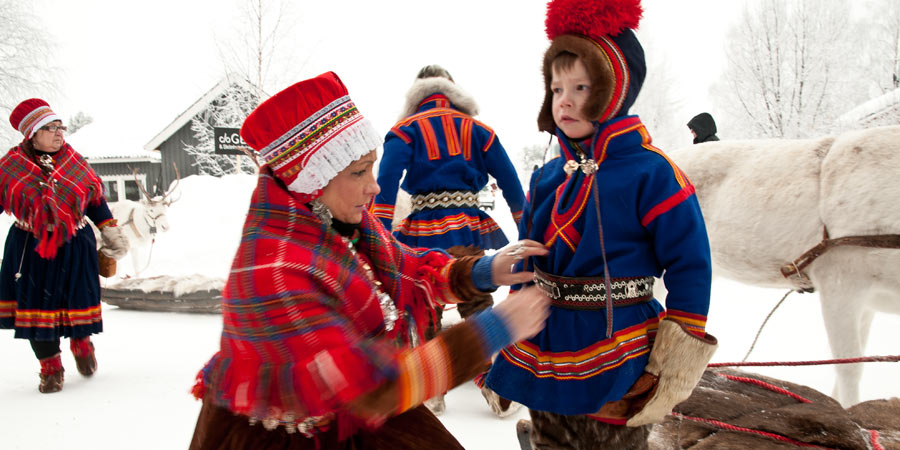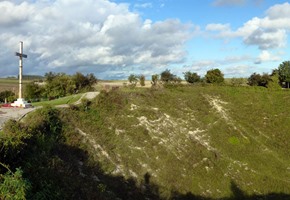102 years ago, on February 6th, 1917, the first Sami national assembly took place in Trondheim, Norway. Concerned that the unique culture and ancient way of life that they had been cultivating for thousands of years was under threat, the indigenous Sami people of Scandinavia began organisations that would eventually lead to the assembly, wherein they would fight for recognition of their culture, language and rights.
Celebrated throughout the Sami ancestral land of Sampi, an area which covers parts of northern Sweden, Norway, Finland and the Kola Peninsula of Russia, Sami National Day occurs on February 6th each year. It is a jovial celebration of history, tradition and multiculturalism in Scandinavia, marked by the flying of the Sami flag - a vibrant flag in traditional Sami dress colours of red, blue, green and yellow, with a circle motif symbolising the sun and the moon - and the singing of the national anthem in the local Sami language, alongside other traditional festivities.
Sami history
Predating even the Vikings, the Sami are descendants of Scandinavia's ancient nomadic people with a past tracing back to a time before recorded history, making details of their origins somewhat difficult to identify. The Sami are one of the oldest cultures found throughout much of northern Europe, first heard of in 98 AD when they were detailed in a book by Roman Historian Tacitus', who spoke of them as 'Fenni' - although his account is widely acknowledged to have been based on hearsay and is not confirmed.
A largely peaceful group, the Sami traditionally led a nomadic lifestyle, travelling throughout the barren landscapes in groups comprised of roughly five families and surviving through hunting, fur trapping, fishing and reindeer herding, wares they would then trade with Vikings and other northern European travellers. The Sami diet consisted of produce that could be sourced locally such as reindeer or other available game, popularly smoked or dried or preservation purposes, along with fish and berries. Traditionally, the Sami lived in tents called 'lavvu'. The style of the tent is like that of a Native American tipi, although it sits slightly lower, making it steadier in windy conditions.
The clothing worn by Sami is called the gákti. A colourful costume, it often consists of bright shades of red and blue and ornate green and yellow detailing. The gákti consists of a dress (a shorter, "jacket-skirt" is worn by men, while women wear a longer traditional dress), a shawl held together by broaches and boots. The gákti was traditionally made using reindeer leather and furs and held much sentimental value for Sami - usually made by a close friend or family member, slight differences in the style of a person's gákti could reveal much about them, including whether they were married or single.
Sami culture today
Today, the Sami are recognised by the United Nations as an indigenous group, affording them special protection and rights which help to protect their culture. Reindeer herding is an act that is legally reserved only for Sami, and it is an act that around 10% of Sami are still actively involved in. 21st century Sami do not eschew a more modern life, and instead marry their unique ancient culture with a more contemporary way of living - for example, while traditional lavvu tents are still used as a temporary measure during reindeer herding, most Sami today live in modern houses, complete with internet and television. Sami culture is still celebrated, driven in part by interest from curious tourists, but primarily by the passionate activism from Sami people who want to both protect and celebrate their culture and traditions. After much lobbying, in 2017, an art museum in Norway was temporarily transformed into a celebration of Sami arts and crafts, with every piece of art in the building replaced with vibrant and decorative Sami pieces. Small but significant steps like this can help ensure that no matter how far into the future we move, the fascinating traditions of different cultures will not be forgotten.
If you have found yourself intrigued by the the culture of the Sami, our 'Huskies and the Northern Lights' tour can offer you a unique insight into the Sami way of life. A truly magical adventure in a veritable winter wonderland, in addition to a husky-hauled sled ride, a journey on the beautiful Ofoten Railway, a visit to Kiruna's Ice Hotel and the chance to see the enchanting dance of the Northern Lights, you will experience an eye-opening 'Sami experience'. Learn more about the lives and culture of Scandinavia's indigenous people with a visit to a local Sami village, where you'll meet reindeer, enjoy a feast in a traditional Sami lavvu tent, and be regaled with fascinating local folk tales around a warming campfire. Please click here for further details.






